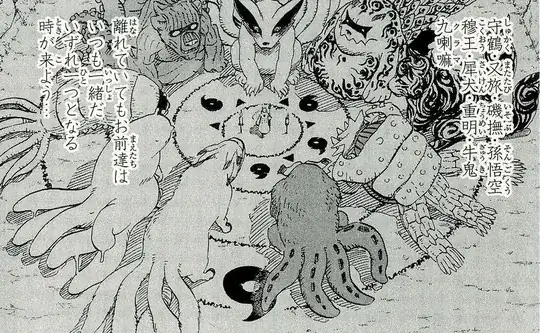I know that the nine-tails exists in many anime series (The notables are Naruto and Pokemon), as well as
His name, Kurama, relating to fox demons across different animes, such as Yu Yu Hakusho.
I also know that the two-tails is adapted from Japanese mythology (The Nekomata, a cat with a split tail).
Does this convention apply to all/most other Bijuu?
